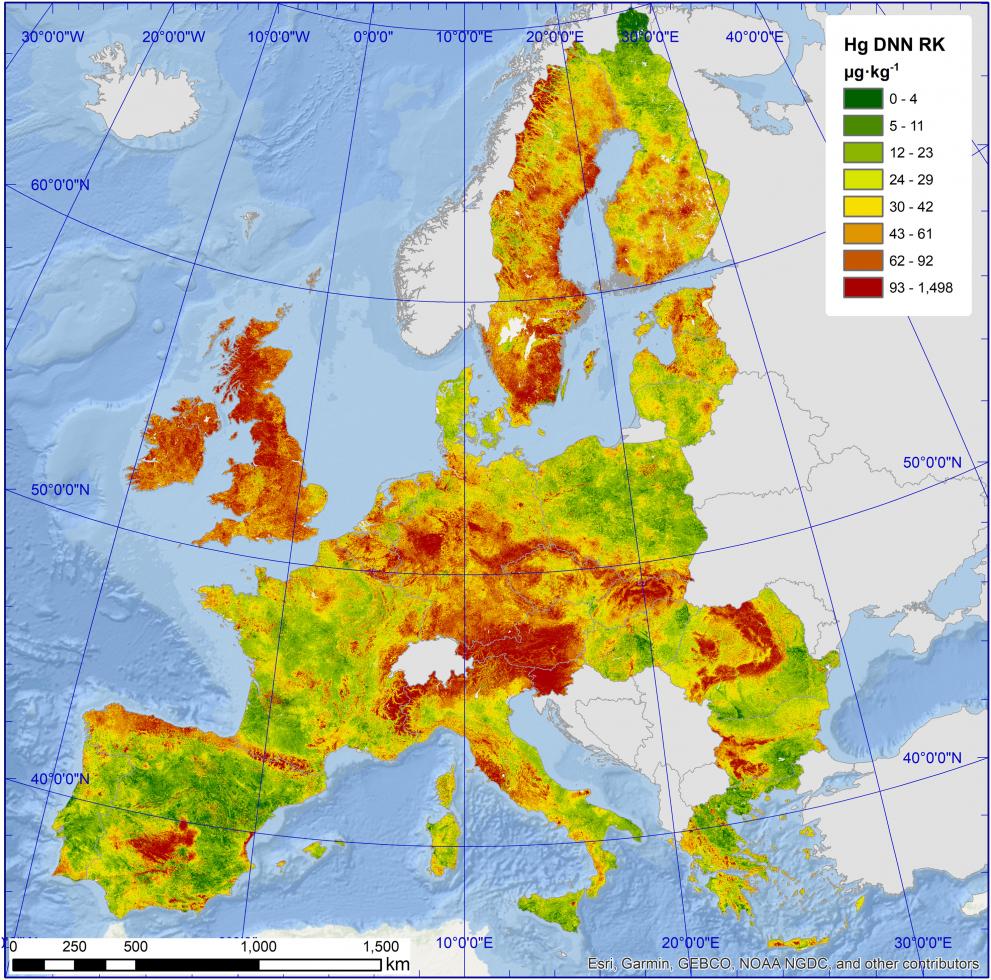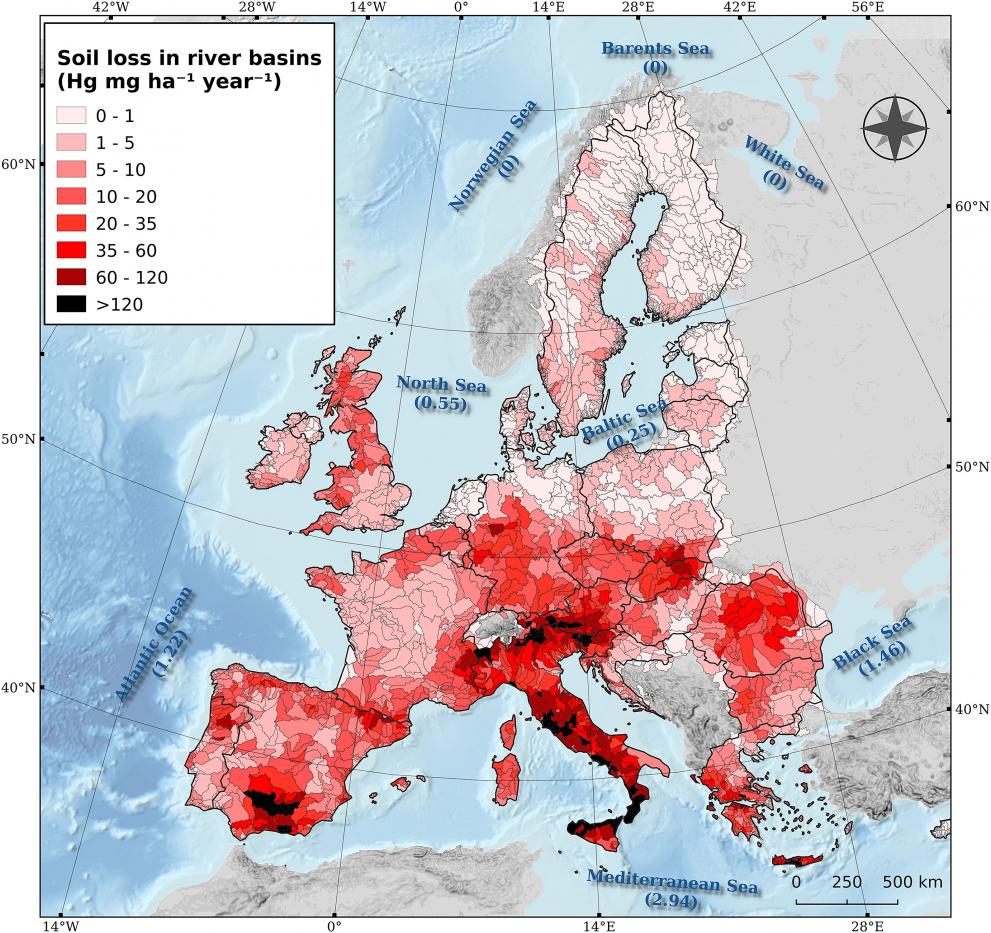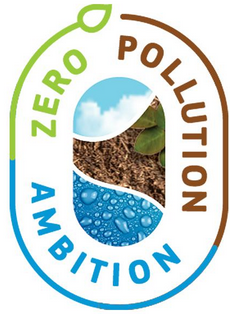
A recent JRC-led article offers insights into how much mercury (Hg) is stored in EU topsoils and how much ends up in river basins and seas.
The study estimates that there are about 44.8 Gg of mercury in EU and UK topsoils, with an average density of 103.2g/ha.
About 43 Mg/yr are displaced by water erosion, about 14% (6Mg/yr) of which ends up in river basins.
Almost half of all Hg losses routed to EU river basins end up in the Mediterranean Sea, followed by the Black Sea.
Mercury – a highly toxic pollutant
At 13.6 times the weight of water, mercury (Hg) is classified as a heavy metal.
It is one of the most dangerous pollutants worldwide, and is highly toxic to humans, ecosystems and wildlife.
When ingested, mercury compounds can cause severe neurological disease.
Mercury found in soil or water can enter the food chain through plants, livestock and fish.
Since the Minamata mercury contamination event, in which thousands died after eating local fish and shellfish that were contaminated with mercury compounds, policymakers have accepted the toxic burden of mercury pollution.
Mercury emissions from human activities
Humans have used mercury for thousands of years in pesticides, fungicides, gold mining and processing and, more recently, the chemical industry.
Human activities (fossil fuel combustion, waste, sewage crematories, smelting, cement and lime production, manufacturing, gold extraction, fluorescent lamps and mining) emit almost five times the emissions from natural processes (from rock weathering and volcanic eruptions).
Mercury accumulates in soils through parent material, atmospheric deposition, industrial contamination, fertilisation and other agrochemical activities.
Mercury in EU topsoils – stocks, sources and runoff
This article is the first high-resolution assessment of mercury (Hg) in European Union topsoils using the Land Use and Coverage Area frame Survey (LUCAS) topsoil database, which includes analyses of 22,000 soil samples from all over Europe.
Using the LUCAS results, the scientists were able to estimate the Hg stocks and concentrations in topsoils, and the fluxes to river basins at the continental scale.
They estimate the topsoil pool of Hg in the EU is estimated at about 44.8 Gg.
While there is a high variation in Hg concentration across the EU, mainly due to the impact of natural processes (vegetation and land cover, high soil organic carbon, parent material, temperature, soil texture and pH), high levels were found close to past mining activities, chlor-alkali industries and coal combustion sites.
High concentrations of mercury have been found close to well-known mining sites such as Almaden (Asturias, Spain), Mte Amiata (Italy), Idrija (Slovenia) and Rudnany (Slovakia).
Using a conceptual modelling framework to couple diffuse soil contamination of mercury with soil losses and sediment distribution in Europe, the authors found that water erosion displaced about 43 tonnes of mercury per year, with about 6 tonnes reaching rivers.
Agricultural lands contribute to more than 85% of Hg losses.
Coupling Hg stocks in the topsoil with soil losses and sediment distribution, the authors estimated that the Mediterranean Sea receives almost half of the Hg fluxes through water erosion runoff into rivers.

Policy implications
While diffuse Hg contamination in European topsoil is not an emerging issue, the authors point to a need for policy measures to manage existing hotspots and the emissions connected to power production.

Areas close to past mining activities, coal combustion sites and chlor-alkali industries are potential hotspots with high concentrations of mercury.
Taking into account global policy developments such as the Minamata Convention and the adoption of the Sustainable Development Goals, this study offers new information on the mercury stocks in EU topsoils and fluxes to the river basins and Sea outlets.
The insights provided by the study can inform EU policy development on the Zero pollution action plan (which envisages the development of relevant indicators to monitor progress in soil pollution) and the Sustainable Development Goals (SDGs) 3.9 and 14.1, which aim to reduce soil pollution by 2030.
Further information
- Mercury in European topsoils: Anthropogenic sources, stocks and fluxes
- A spatial assessment of mercury content in the European Union topsoil
- Mercury content in the European Union topsoil
- LUCAS: Land Use and Coverage Area frame Survey
- Zero pollution action plan
Related Content
Mercury in European topsoils: Anthropogenic sources, stocks and fluxes
A spatial assessment of mercury content in the European Union topsoil
Mercury content in the European Union topsoil
Details
- Publication date
- 12 November 2021
